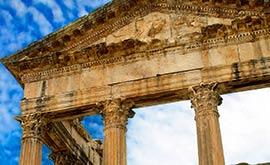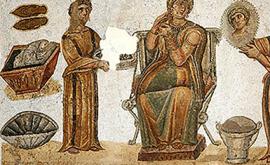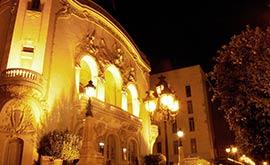Carthage
Legend has it that Carthage (north of Tunis) was founded by the Phoenician Queen Elissa, also known as Dido, in 814 BC. Longstanding rivals of the Greeks, the Carthaginians – also known as the Punics – were in control of a network of trading posts in the Mediterranean, from Spain to Sicily. The Romans destroyed the city in 146 BC, then rebuilt it and made it the capital of the rich province of Africa. Some fragile remains of Punic Carthage can still be seen today: the areas where Mago and Hannibal lived and the Punic ports. The Roman ruins show the city’s opulence: the Baths of Antoninus, whose main room was 30 metres tall and whose cisterns had a capacity of 60,000m3, and the Basilica of Damous El Karita which was the largest in Africa, as well as many more.
Kerkouane
Punic civilisation has held on to many of its secrets. Carthage itself has only held on to a few rare vestiges of this time. Which is why Kerkouane (in Cap Bon) is so important. It has never been rebuilt since it was abandoned in the 3rd century BC. Kerkouane is a Punic Pompeii: you can see the typical urban layout of a small Carthaginian town. The wide, regular streets lead into squares and courtyards; the great gods of the Punic pantheon – Baal, Tanit, Ashtart, Eshmun and Melqart – were worshiped in an open-air sanctuary.
Dougga
The archaeological site of Dougga is one of the most spectacular in Tunisia. Its ruins are surrounded by olive trees and nestled into a cliff facing a slightly inclined plateau; over 70 hectares, they trace out the contours of an almost completely preserved Roman town. Once a royal Numidian town, in Roman times, Dougga, or Thugga, was adorned with decadent monuments: the Capitol, whose pediment bears a depiction of Emperor Antoninus’s elevation to godhood, the 3,500 seat theatre, the Temple of Juno Caelestis encircled by a semi-circular portico, where the Carthaginian goddess, Tanit, continued to be worshipped in secret. These monuments date back to the 2nd and 3rd centuries, a time of great prosperity for Roman Africa, and they are some of the best preserved of the whole Roman world.
El Djem
Not many ancient sites are as impressive as the Roman Coliseum at El Djem. In this enormous amphitheatre, inspired by the one in Rome and architecturally flawless, epic entertainment was put on pitting hunters against wild animals.
Medinas
Although the medinas of Tunis, Kairouan and Sousse are UNESCO World Heritage sites, there are plenty of others that are well worth a visit, including the one in Sfax.
The medina in Tunis boasts a stunning example of 9th century architecture, the Ez-Zitouna Mosque, as well as many other monuments dating back to the Ottoman Empire including the Hammouda Pacha Mosque, the Madrasa Slimania and the tomb of the princess Aziza Othmana. The Art Nouveau, Art Deco and Arabisance buildings around the medina are also worth checking out.
The medina in Sousse is staggered up the side of a hill facing the sea. It is a real treat to explore the narrow little alleyways with their bygone atmosphere and haggle in the souks. Overlooked by the imposing silhouette of the Khalef Tower, the old town has managed to preserve its medieval ramparts and many monuments that bear witness to its past as a stronghold: the Ribat, a small fort and religious retreat, the Grand Mosque that looks like a fortress and the imposing Kasbah.
In the medina in Kairouan, the Great Mosque is well worth a visit: non-Muslims are allowed to enter the courtyard and see the prayer room, a majestic forest of arches and ancient columns. You can also climb up the minaret, inspired by the Lighthouse of Alexandria. You’ll be amazed by the power and simplicity of this 9th century architecture. The contrast is striking between that and Kairouan’s other great monument: the graceful Zaouia of Sidi sahib (or “Barber’s Mosque”), whose wide courtyards are decorated with brightly coloured stones.
The medina in Sfax is one of the best preserved in the whole of the Mediterranean basin, and is laid out like a typical old Arabic town. Its crenelated battlements, built in the Middle Ages, are studded with huge doors: the oldest ones were built as defences to hold back invaders. The Great Mosque, built in the 9th century, occupies a central position.




